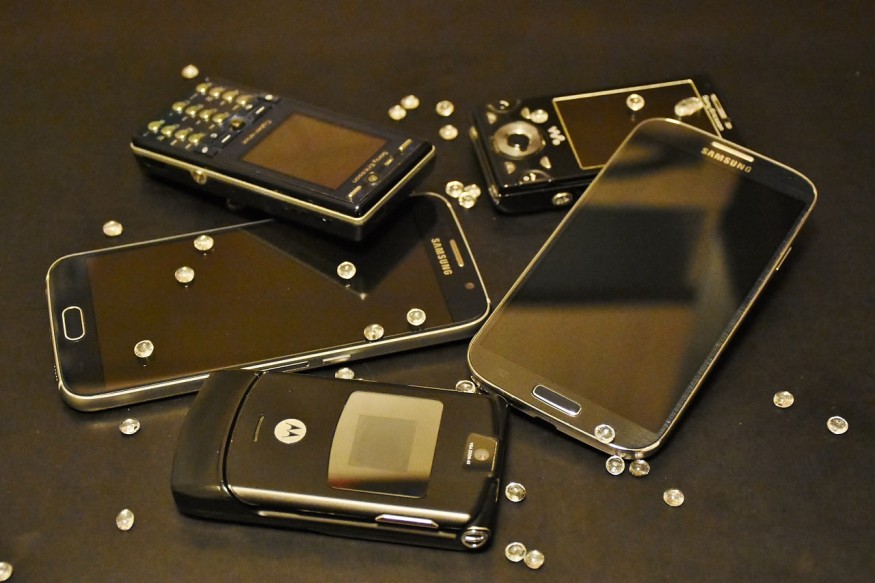Mobile phones have become an indispensable part of people's lives, replacing multiple devices such as maps, watches, calendars, and cameras. However, it was only 50 years ago that the first-ever wireless handset, the Motorola DynaTAC 8000X, made its first call, weighing a hefty 1.75lb.
Since then, mobile phones have undergone a significant transformation, becoming more compact with touchscreens, high-quality cameras, and advanced capabilities such as connecting to the internet, sending texts, recording videos, and even paying for purchases. In celebration of this milestone, MailOnline reflects on the evolution of mobile phones over the past five decades.

1970s-1980's: Firsts in Mobile Phones
April 3, 1973, marks the day when Motorola employee Martin Cooper made the world's first public mobile phone call in New York, using a Motorola DynaTAC 8000X. The device was portable, weighing 1.75lb, and much lighter than the other mobile phones that were usually installed in cars or briefcases at the time.
Forty years later, Cooper didn't believe that the mobile phone would ever become a mass-market product due to its high initial cost, but he did recognize that the device's size and weight would be reduced over time.
The Motorola DynaTAC 8000X became available to purchase in 1985, costing £3,000 in the UK, and became largely associated with young people in corporate jobs, frequently featuring in movies such as "Wall Street" and "American Psycho."
The Motorola MicroTAC 9800X is seen as the first flip phone, paving the way for the trend that extended through the noughties, including the iconic Motorola RAZR, which was the thinnest mobile phone on the market when it was released in 2004.
1990s: Mobile Phones' Mass Production and Internet Access
In 1991, Orbitel, a British firm, launched the world's first GSM or digital phone, the TPU 900, which weighed over 4 lbs. The Nokia 1011 became the first mass-produced GSM phone, costing £234. In 1994, the Hagenuk MT-200 became the first mobile phone to run games while the Siemens S10 was one of the first phones with a color display in 1997.
The Nokia 7110 was the first phone with a WAP browser that could access a limited range of internet content, as well as implementing the T9 predictive text input method for messaging.
The TPU 901, a sibling of the TPU 900, became the first phone to receive a text message in 1992, and this marked a turning point for mobile phones to become more accessible to users beyond businesses. The GlobalHandy from Hagenuk released in 1997 had an integrated aerial within the body of the device, a design feature still found in modern smartphones. The Nokia 7110, which became known as the 'Matrix phone', was a huge success due to its WAP browser and T9 predictive text input method.
2000s and Beyond: Camera Phones, Touchscreens, 5G, and iPhone
The J-Phone J-SH04 from Sharp, released in Japan in 2000, was the first mobile phone with a built-in camera, while the Sony Ericsson Z1010, released in 2003, was the first phone with a front-facing camera.
The LG Prada, released in 2006, was arguably the first capacitive touchscreen phone. The iPhone, introduced by Apple in 2007, revolutionized the smartphone industry with its intuitive touchscreen and layout of applications and became Apple's most successful product.
In 2011, the Samsung Galaxy Note, with its 5.3-inch screen and S Pen stylus, paved the way for giant smartphones. The article also notes the introduction of 3G, 4G, and 5G technology, which has led to faster download and upload speeds and smoother real-time applications.
RELATED ARTICLE: People Spend an Average Of 4.8 Hours On Smartphones as the World Embraces New Mobile Lifestyle, Study Says
Check out more news and information on Mobile Phones in Science Times.
© 2026 ScienceTimes.com All rights reserved. Do not reproduce without permission. The window to the world of Science Times.










